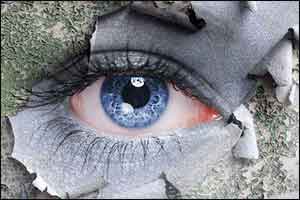- Home
- Editorial
- News
- Practice Guidelines
- Anesthesiology Guidelines
- Cancer Guidelines
- Cardiac Sciences Guidelines
- Critical Care Guidelines
- Dentistry Guidelines
- Dermatology Guidelines
- Diabetes and Endo Guidelines
- Diagnostics Guidelines
- ENT Guidelines
- Featured Practice Guidelines
- Gastroenterology Guidelines
- Geriatrics Guidelines
- Medicine Guidelines
- Nephrology Guidelines
- Neurosciences Guidelines
- Obs and Gynae Guidelines
- Ophthalmology Guidelines
- Orthopaedics Guidelines
- Paediatrics Guidelines
- Psychiatry Guidelines
- Pulmonology Guidelines
- Radiology Guidelines
- Surgery Guidelines
- Urology Guidelines
A new periodic auto inflammatory syndrome of Eye identified

The researchers have been able to identify Keratoendotheliitis fugax hereditaria a new periodic autoinflammatory syndrome of Eye.Up to one in 20,000 Caucasians may be predisposed to develop the syndrome.So far, keratoendotheliitis fugax hereditaria has only been reported from Finland.
Dr. Olavi Valle in 1964, for the first time reported that in a family several members had a common problem of irritation of eyes for a few days several times a year, and they experienced blurry vision for a few weeks after each attack. The attacks used to begin in teenage and continue through middle age leading to development of permanent corneal opacities.After more than two decades , a second Finnish family emerged, and it was found that the inflammation primarily affected the corneal endothelium, a cell layer that covers the back of the cornea, an observation that identified the disease as a keratoendotheliitis.
Dr. Valle named the disease keratitis fugax hereditaria, which is Latin for a transient inherited corneal inflammation. More than two decades later, a second Finnish family emerged, and it was found that the inflammation primarily affected the corneal endothelium, a cell layer that covers the back of the cornea, an observation that identified the disease as a keratoendotheliitis.
"Thanks to the discovery by Dr. Valle, we diagnose new patients with keratoendotheliitis fugax hereditaria every year in the Helsinki University Eye Hospital," said Dr. Joni A. Turunen, the project leader of the research team that discovered the causative mutation. "It is not an uncommon disease, and we have always been intrigued about what is causing it, so we decided to use next generation sequencing to solve that issue."
The fourth cryopyrin-associated periodic syndrome
Dr. Turunen recruited thirty affected patients from seven families and four additional ones who appeared to have the disease but could not name any affected relative. After first sequencing the protein coding regions of all chromosomes from ten patients, he found that all shared an identical point mutation in the Nucleotide-Binding Domain, Leucine-Rich Repeat Family, Pyrin Domain-Containing 3 (NLRP3) gene that codes cryopyrin.
"Cryopyrin mutations were known to cause rare periodic autoinflammatory syndromes, diseases in which the white blood cells of the human body become activated without any outside stimulus," said Kivelä. "Corneal opacities have been reported in some patients with the previously known cryopyrin-associated syndromes. Thus, we became confident that the mutation we discovered indeed was disease causing."
The team subsequently confirmed by direct sequencing that the same mutation was present in all other affected family members and absent from those that had healthy eyes.
Keratoendotheliitis fugax hereditaria is the fourth cryopyrin-associated periodic syndrome. The other three - familial cold autoinflammatory syndrome, Muckle-Wells syndrome, and chronic infantile neurological, cutaneous, articular syndrome (also known as neonatal-onset multisystem inflammatory disease) - affect multiple organs and can be debiliating. Like keratoendotheliitis fugax hereditaria, they emerge during childhood, but their hallmarks are episodic fevers, skin rashes, and inflammation of the joints, gastrointestinal tract and the nervous system rather than ocular irritation.
"Intriguingly, although a relatively minor finding in these syndromes, the patients nevertheless have been reported to show ocular inflammatory signs and some have developed similar corneal opacities than what we see in our patients with keratoendotheliitis fugax hereditaria", said Turunen. "We believe that the mutation that underlies keratoendotheliitis fugax either is a milder form of the spectrum in which only the eye is sensitive enough to become symptomatic, or faulty activation of cryopyrin is entirely restricted to the eye".
"Now that the gene has been identified, we have reason to believe that the disease actually is more universal. Exome databases show that carriers of this mutation exist in other populations with European ancestry as well, with a frequency comparable to that in Finns", said Anna-Elina Lehesjoki, professor at the Folkhälsan Institute of Genetics, and a senior geneticist in the team that made the discovery.
"The carrier frequency in the ExAC database suggests that up to one in 20,000 Caucasians may be predisposed to develop symptoms of keratoendotheliitis".
In contrast, no carriers of the causative mutation have been reported in African, Asian and Latin American populations with data in ExAC, the Exome Aggregation Consortium browser hosted at the Board Institute, Cambridge, Massachusetts.
"Because the symptoms of keratoendotheliitis fugax hereditaria are short-lived and unspecific, a family history is seldom volunteered by our patients and also unlikely to be queried by an ophthalmologist unaware of its existence, as almost all ophthalmologists outside Finland have been," said Turunen.
"We expect that patients begin to emerge more widely now that the diagnosis can be made by genetic testing. We were just the lucky ones to be informed early of the existence of this intriguing corneal disease, thanks to the astute observations by Dr. Valle".
At the moment, no specific treatment for keratoendotheliitis fugax hereditaria is known. The other cryopyrin-associated periodic syndromes have responded to drugs that target interleukin 1 beta, a downstream mediator of the cryopyrin cascade.

Disclaimer: This site is primarily intended for healthcare professionals. Any content/information on this website does not replace the advice of medical and/or health professionals and should not be construed as medical/diagnostic advice/endorsement or prescription. Use of this site is subject to our terms of use, privacy policy, advertisement policy. © 2020 Minerva Medical Treatment Pvt Ltd